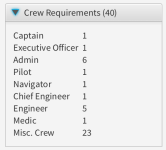In my copious amount of free time I have been looking at Container ships...
The most common Container Ship is the Feeder size ships, generally they carry under 1,000 TEUs. But they can service almost any port. In traveller terms a 1,000 TEU capacity ship is in ballpark of 5,000 to 10,000 dTons. And would be streamlined. Please note the 1,000 TEU is that around the max for ships that fall into this class, with around 500 being not an uncommon number. With that Traveller ships sizes from Book2 aren't unreasonable.
Also another thing to consider when looking at real world container ships half or more of their Capacity for TEUs is carried above the Hatches, i.e. external cargo. My only issue with that containers built to Jump conditions will trend towards the price of similarly sized smallcraft hulls.
Now none of the above precludes the truly huge container ships, it just emphasizes that they are on limited Large Volume runs.
The most common Container Ship is the Feeder size ships, generally they carry under 1,000 TEUs. But they can service almost any port. In traveller terms a 1,000 TEU capacity ship is in ballpark of 5,000 to 10,000 dTons. And would be streamlined. Please note the 1,000 TEU is that around the max for ships that fall into this class, with around 500 being not an uncommon number. With that Traveller ships sizes from Book2 aren't unreasonable.
Also another thing to consider when looking at real world container ships half or more of their Capacity for TEUs is carried above the Hatches, i.e. external cargo. My only issue with that containers built to Jump conditions will trend towards the price of similarly sized smallcraft hulls.
Now none of the above precludes the truly huge container ships, it just emphasizes that they are on limited Large Volume runs.


